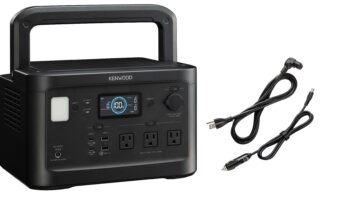LAS VEGAS – Krell Industries is bringing highpower Class A amplifiers back into its line after an absence of more than seven years, but it’s adding patent-pending technology to improve Class A efficiency and reduce Class A amplifier size to suit changing consumer lifestyles.
The amps are also positioned as making the most of high-resolution audio formats because Class A technology eliminates the crossover distortion generated by Class A/B amps.
As a result, the amps deliver the low-level details, subtleties and spatiality of high-resolution music, the company said.
“With high-resolution audio formats, there is more information available,” said Bill McKieganm, president. Class A amps are more “faithful to the source,” offering “rich, full-bodied sound” with the dynamics, bass response, and extended frequency response for which Krell is known, he said.
“Large amps in the middle of the floor are not as fashionable as they once were,” McKiegan added, pointing to consumer demand for smaller amps that fit in racks and in smaller living spaces.
The seven new Class A amps include what Krell believes are the first Class A multichannel amps on the market. All models ship in January to replace the company’s Class A/B lineup of amps, which operate in Class A mode at low outputs but switch to A/B operation at higher outputs to maintain efficiency and reduce chassis size.
Krell’s lineup consists of the $6,500 2×175-watt Duo 175, the $8,500 2×300-watt Duo 300, the $7,500 5×200 Chorus 5, $9,500 7×200-watt Chorus 7, $7,500 375-watt monoblock Solo 375, the $10,000 575-watt monoblock Solo 575, and the $10,500 3×300-watt Trio 300. Output is rated at 8-ohm loads.
The amps use the company’s iBias technology to improve Class A efficiency and thus reduce chassis size to 3U height (or 5.25 inches) from the 5U height of Krell’s previous Class A amps. Depth is only 18 inches compared to 21 inches, and width is the standard rack width of 17.25 inches instead of 19 inches. The new iBias amplifiers include whisper fans.
With iBias technology, the amp’s output stage is always on, just as in traditional Class A amps, to eliminate the “crossover” distortion generated by Class A/B amps. With traditional Class A amps, the output stage bias is set for full rated power at all times, even when not needed, requiring large heat sinks to dissipate wasted energy. A traditional 200-watt Class A amp “has its bias set for 200 watts all the time,” McKiegan explained.
With iBias-equipped Class A amps, however, the amp measures current demand in real time at the output stage and supplies only the Class A bias current needed at a given moment. “The output stage is always on, but the Class A bias matches demand,” McKiegan explained.
Class A/B amps, he noted, generate crossover distortion when an audio sine wave crosses over from positive to negative, or on and off, and back again on a continuing basis.
Krell’s first amplifier, launched in 1981, was a Class A amplifier.











